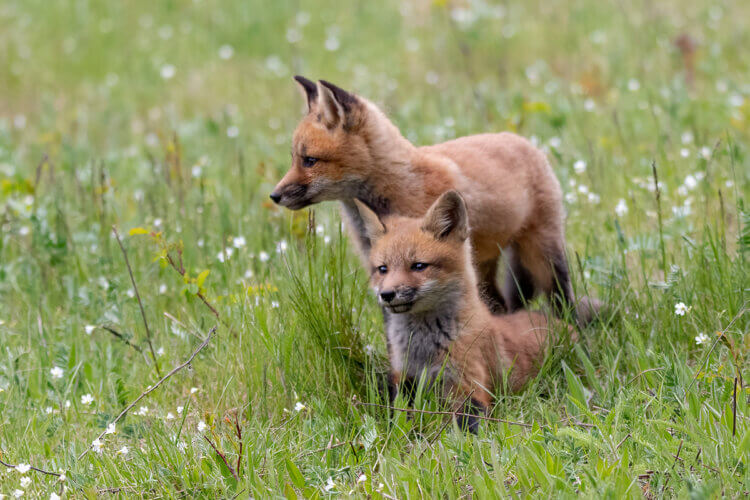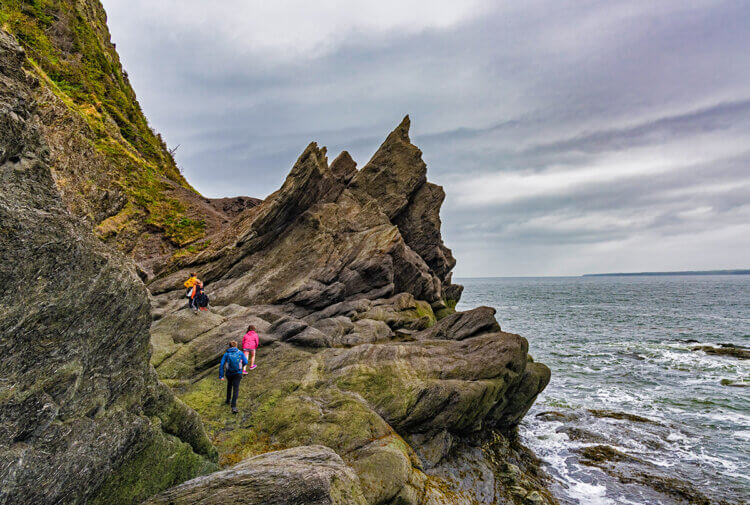
All photos © Robin and Arlene Karpan

Parc national du Bic is a highlight when travelling Quebec’s Gaspé Peninsula coastline. Sculpted by the sea, this unique maritime landscape boasts picturesque capes, mountainous peaks, thick forests, and rugged coastal scenery. This gem of a park offers great hiking and biking trails, kayaking areas, and places to watch wildlife or search out rare plants.
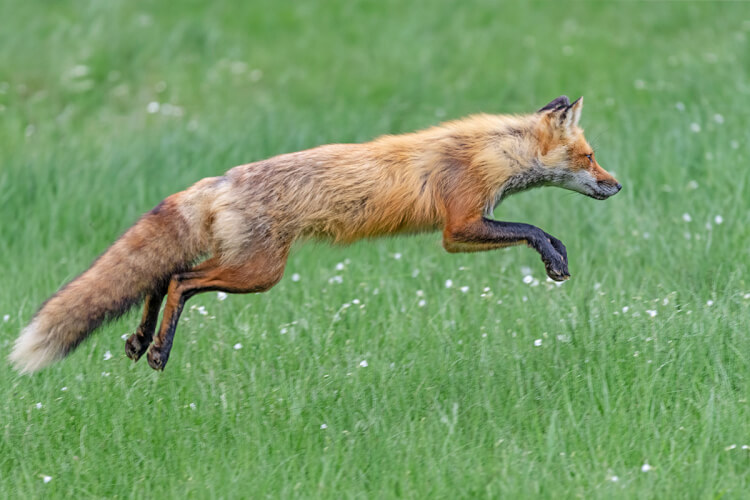
Shaped like a giant anvil on a pedestal, Bic is one of few places along the southern side of the St. Lawrence River that juts into the river. It’s a short drive southwest of Rimouski and is accessible along Hwy #132, the major thoroughfare that runs along the peninsula’s coastline.
What Makes Bic Special?
It’s easy to see why Bic was chosen as a park site. The rugged tidal coastline features everything from cliffs, coves, bays, and islands, to beaches and marshes. Mountainous massifs that are higher than anything else in the region along with thick stands of forest also make the area unique.
The various habitats of the park host an amazing array of wildlife. Birds of prey circle overhead, eider ducks and many species of seabirds nest here during the breeding season. Seals haul out on the rocky shoreline, and foxes and deer frequent areas near the visitor centre or along some of the trails.
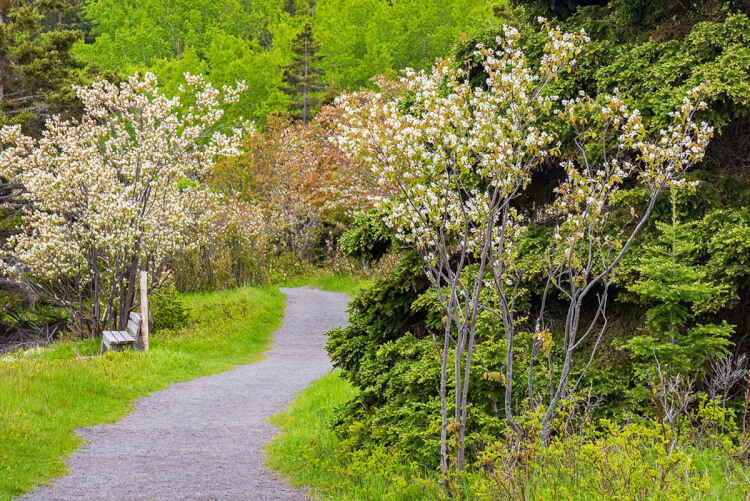
You will also find many spots to enjoy the sunset over the St. Lawrence River. Indeed, sunsets are so famous that the best spots are even marked on the park map. For us, however, sunsets will have to wait for a return trip, since our short stay coincided with a cloudy and rainy period.
Things to Do in Bic
A great place to start a visit is the Ferme Rioux Discovery and Visitor Centre, located in a former barn in the centre of the park. Here you can ask about activities and tide tables and grab a snack or a souvenir from the nature shop. It’s also the jumping-off point for several hikes and cycling trails.
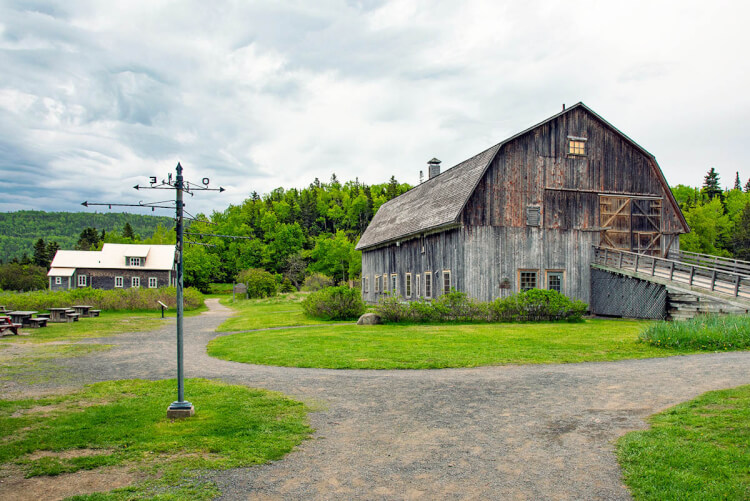
We camped in the large Tombolo campground, one of four in the park. Camping options are many, with serviced or unserviced sites, and equipped yurts and chalets that are popular options with families.
We were pleased to find an extremely useful amenity in our campsite that we had never seen in other campgrounds. Two poles, about three metres apart, had a thick rope stretched between them. It was the ideal spot to easily stretch a tarp – something we had to do soon after arriving. Just as we finished setting up our tent, the weather turned nasty with fog and rain. Fortunately, we were able to quickly put up a tarp and pull the picnic table under it. Rain continued most of the day and into the night, but we had a dry place to sit and make meals.
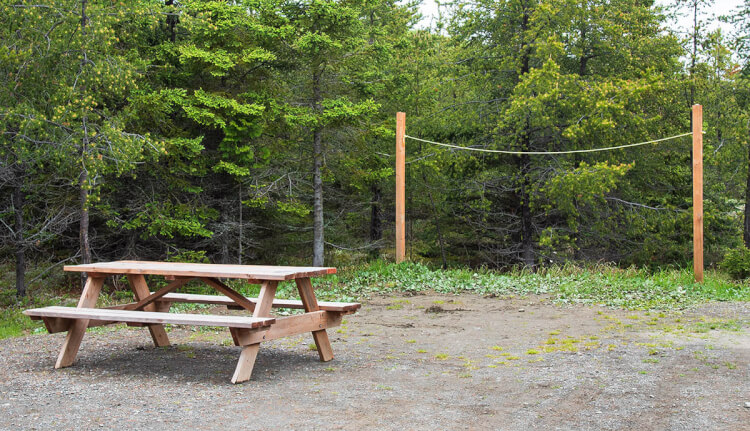
Hitting the Trails in Bic
The next morning when the rain finally abated, we headed out on one of the park’s signature trails, Le Chemin du Nord or Northern Trail. This pleasant trail runs along the beach and then near sharp and jagged shoreline rocks, giving us a first-hand look at some of the spectacular coastal scenery. If you time your walk around low tide, more beaches will be exposed, making it easier to walk.
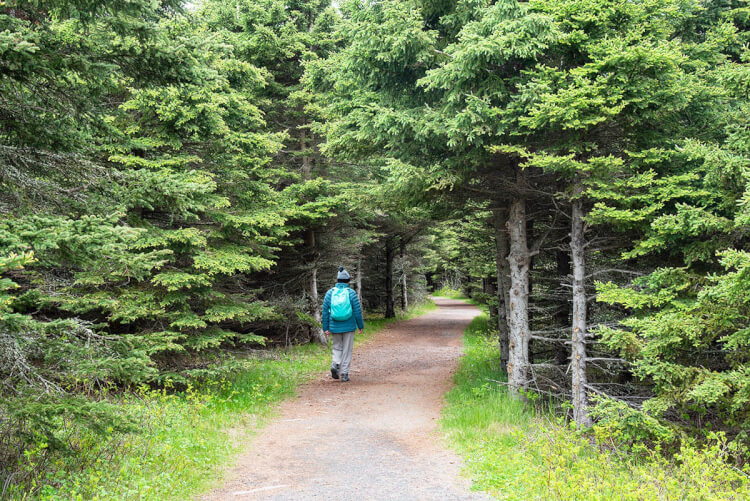
Hiking is very popular in the park, with a wide array of trails to choose from. The Grand Tour, an 8.7-km loop, is an extension of the Chemin du Nord trail. It’s rated as difficult since parts of the trail include scrambles along rocky areas that could be wet and slippery after rain or after high tide. Some stretches are only accessible at low tide, so it’s important to consult tidal charts and time your departure accordingly. If you run out of time, you might have to turn back. Among its many rewards are beautiful beaches, a chance to see seals, and birdwatching.
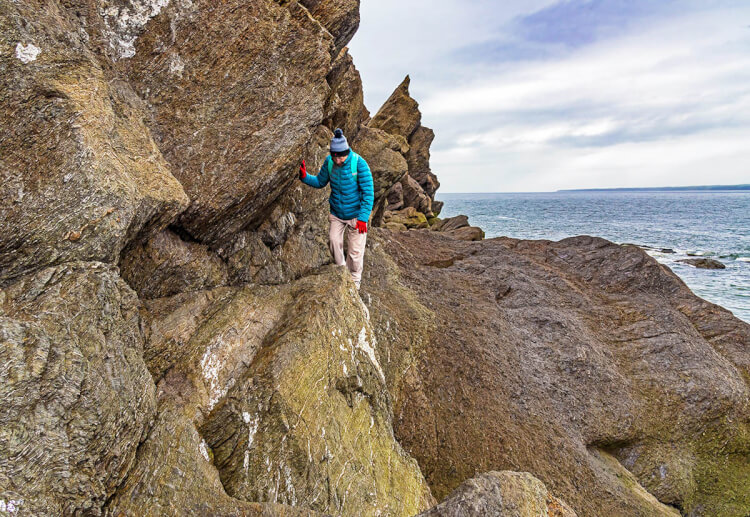
You can also explore the park on a network of cycling trails, or kayak in some of the bays and coves. The park offers guided outings, fireside talks, and junior park ranger activities for the kids.
Going Back in Time
The area is the traditional homeland of several Indigenous groups. Archaeological digs revealed evidence of camps dating back thousands of years. Stone tools, shards of pottery and dwellings have been found. We can see evidence of ancient stone rings just off the Chemin du Nord trail.

European explorers began arriving in the mid-1500s. Jacques Cartier stopped by in 1535, seeking shelter from the river currents and winds. Samuel de Champlain followed in the early 1600s and noted the mountain that came to be known as Pic (or “Peak”) Champlain. For sailors that followed, the 346-metre mountain became a navigation landmark. It is thought that Pic might have been pronounced Bic somewhere along the way, and the name stuck.
Later on, settlers arrived, motivated by the prospects of fishing and the fur trade. Agriculture took hold in earnest in the 19th century. Some farm buildings, like the Ferme Rioux visitor centre in the barn, and houses that were in use when the park was declared in 1984 still stand along the Chemin du Nord trail.
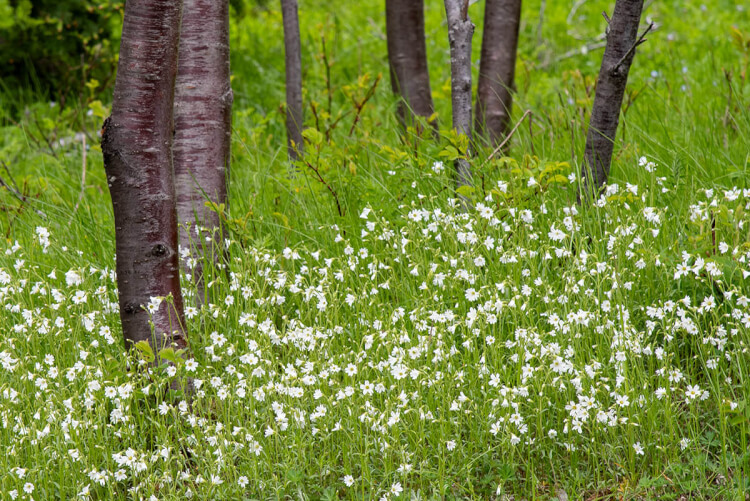
Wildlife and More Scenic Views
We packed a picnic lunch and set out to one of Bic’s main viewpoints at Pointe aux Epinettes in the larger area known as Anse a l’Orignal or Moose Cove. Here we look across the bay to the barn visitor centre on the other side. Various sea birds frequent the area. We were especially pleased to find several common eiders, North America’s largest ducks, which occur almost exclusively in coastal areas.
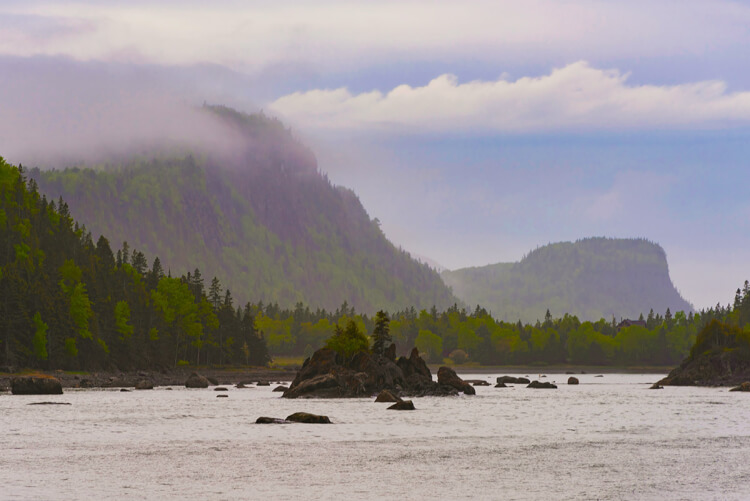
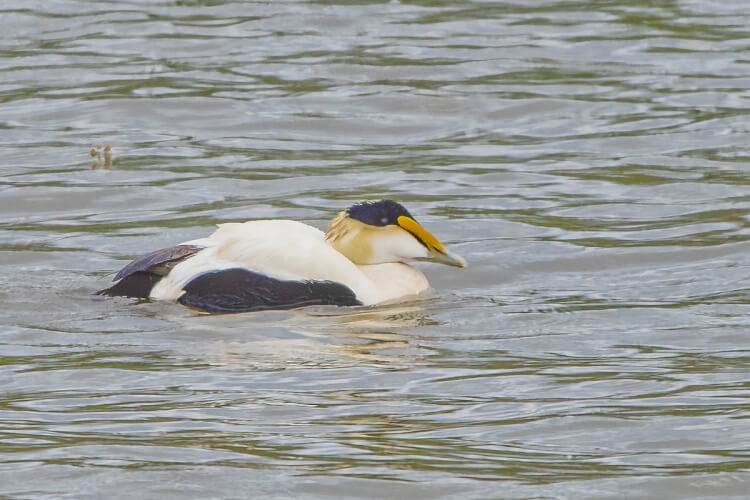
Near the picnic shelter at the beach, we found stands of bright red columbine and other native plants. Several species of rare plants grow at Bic, owing in part to its unique location between deciduous and boreal forests. Rocky headlands are good places to look for rarities.
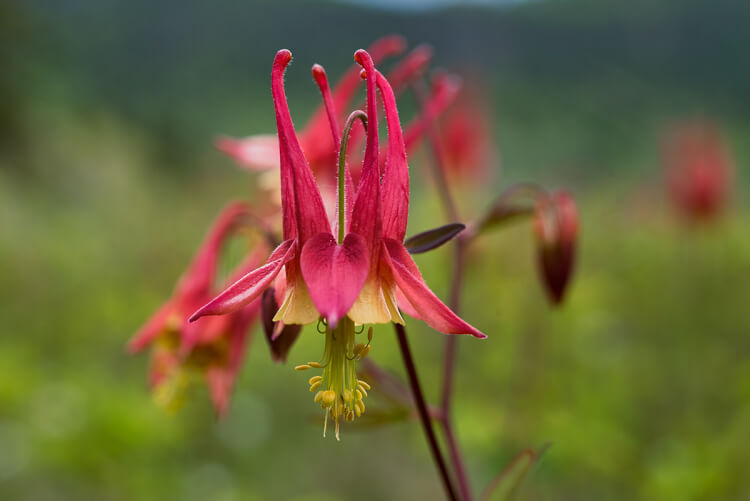
You might also see seals in this area. Harbour seals are residents, while grey seals visit in the summer. Both species use the protected waters to rear their young, feed, and sunbathe on the rocky shoreline.
The wildlife that we had the most fun with was foxes. Near the visitor centre, mothers brought their kits out to play and dart around, providing quite a show for onlookers. Park staff often came by to encourage the foxes to return to the forest, away from the dangers of moving vehicles in parking lots and along roadsides.
If you Go
Be prepared for changeable weather, muddy sections along trails, slippery rocks and exposed tree roots. The park recommends sturdy footwear, and taking rain gear. Check on the tidal schedule if you do longer hikes along the coastline – you could become stranded as rising water washes over rocky areas and beaches.
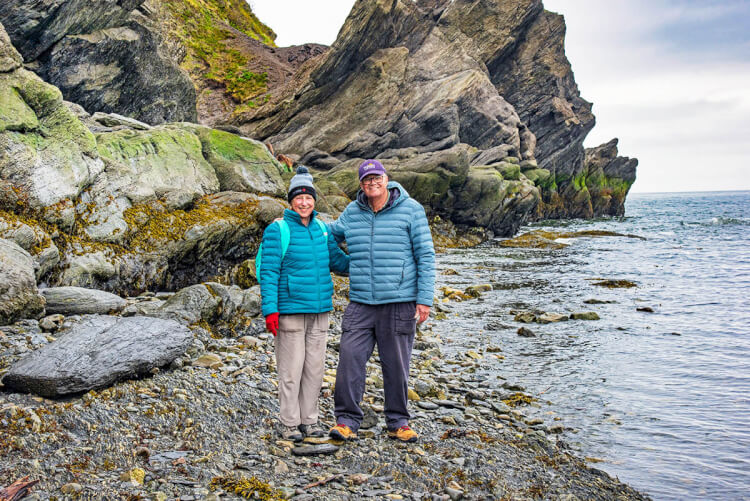
Visitors from outside Quebec are often confused by the “national park” designation. Bic, along with some other parks with a national designation are not part of the Parks Canada network (although some in Quebec are such as Forillon National Park farther east along the Gaspé coast). Rather, Bic is administered by SEPAQ, a provincial government agency that protects and manages parks and wildlife reserves. You need a pass available from SEPAQ to visit their parks. See the website for options and prices.
Visit Nearby Rimouski
Rimouski, the largest city along the Gaspé coast, is only a short drive from Bic. Here we find a full range of visitor services including grocery stores, restaurants, gas stations, and accommodation. After we visited Bic, we stayed at Motel Bienvenue in Rimouski, in a comfortable self-contained suite with a kitchen and all the necessities.
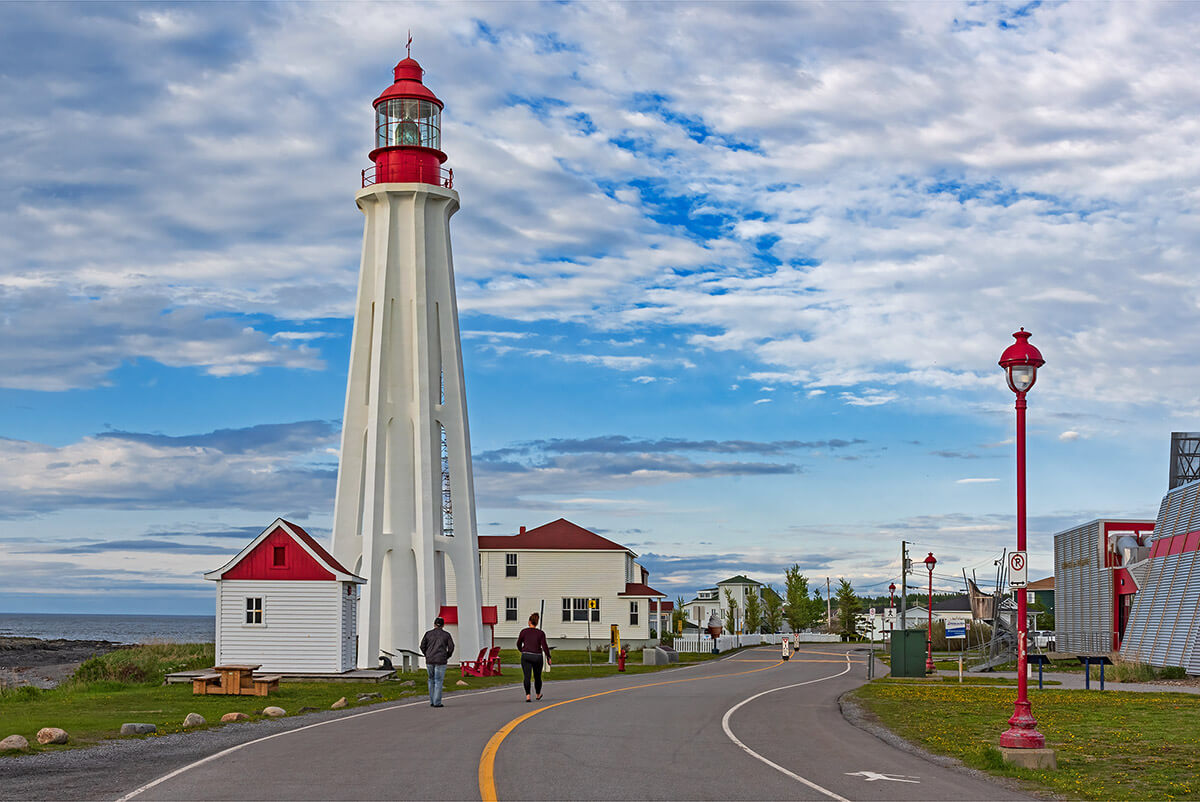
A bonus was that our accommodation was right next to the Pointe-au-Pere lighthouse, now a national historic site. You can climb to the top for stellar views of the St. Lawrence, and go through the exhibits in the lightkeeper’s house. Near the lighthouse is the Onondaga Submarine which was in service from 1967 to 2000, and is the only submarine in Canada that is open to the public.
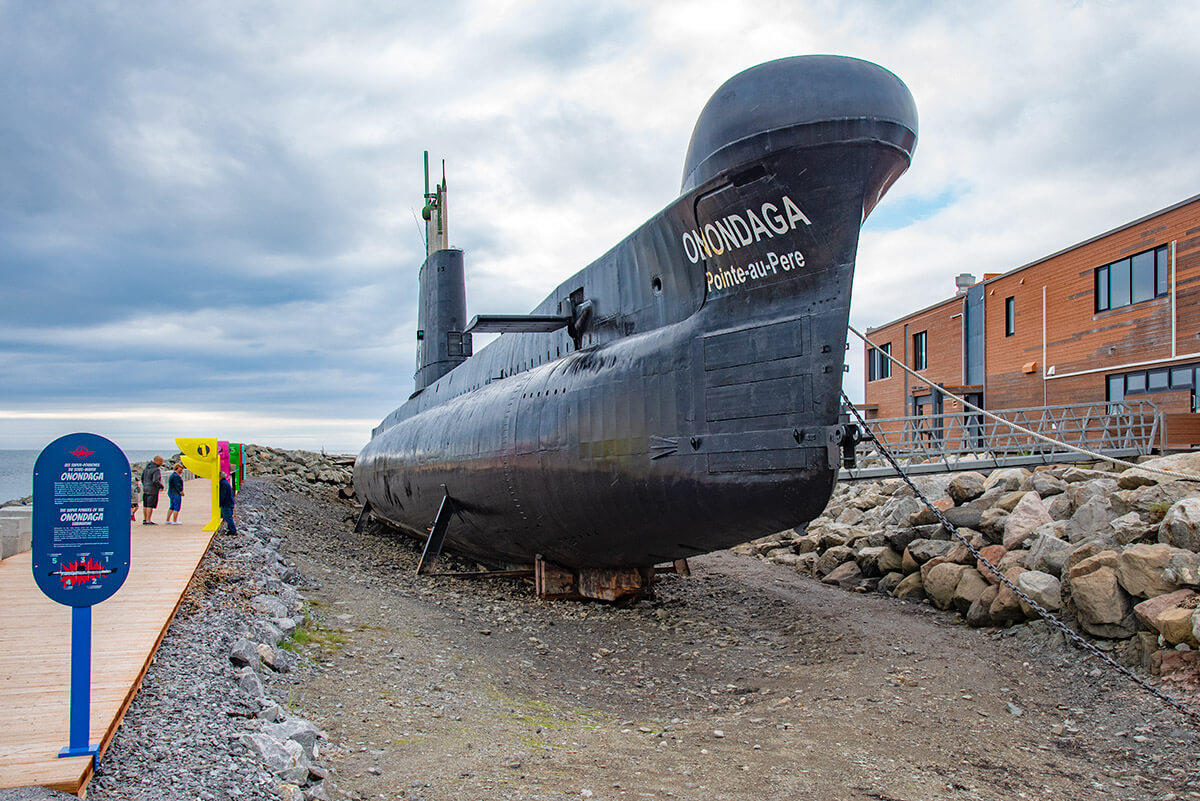
This is just one stop along the extensive Lighthouse Trail Road Trip on the Gaspé Peninsula that we describe on Photojourneys.
Resources
- Discovery Guide and information on Parc national du Bic, SEPAQ.
- Other parks in the SEPAQ system, and how to get your park permits.
- Quebec Maritime promotes the tourism regions of Eastern Quebec.
- Bas-Saint-Laurent highlights areas in the Lower St. Lawrence River.
- Tourism Gaspésie features the Gaspé region, national parks, Percé Rock, gannet colonies, and more.
Other Photojourneys articles on the Gaspé Peninsula
- Hiking with Whales in Quebec’s Forillon National Park
- Wildlife Adventure on Quebec’s Bonaventure Island
- 7 Must-do Activities in Forillon National Park in Quebec
SUBSCRIBE to Photojourneys below
Feel free to PIN this article for later on Parc national du Bic, Quebec



